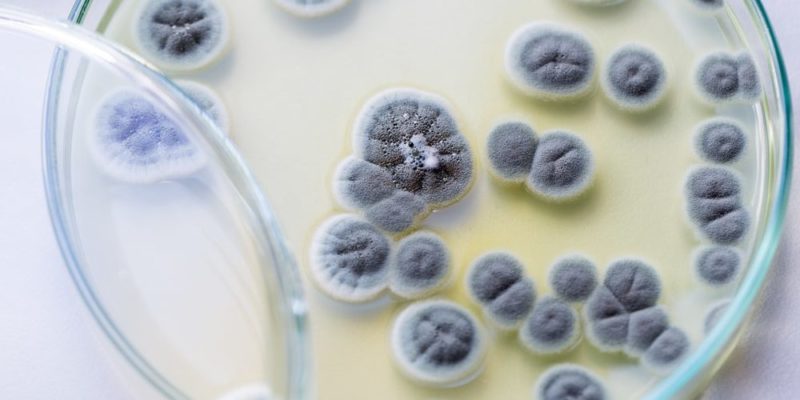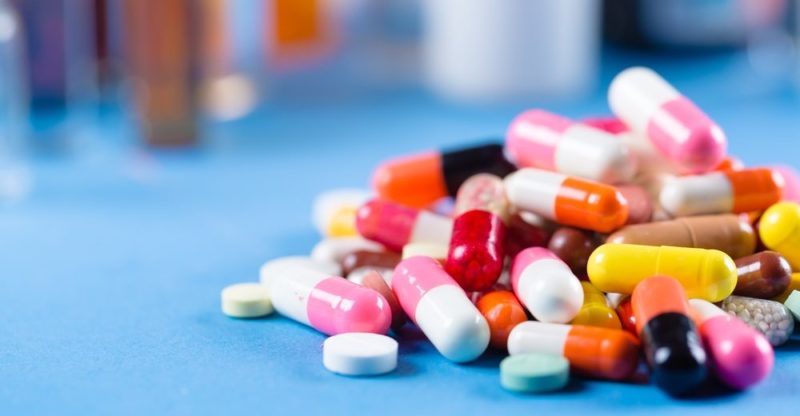We explain what penicillin is, how it was discovered. types that exist and what it is for. Also, what are its features and benefits?
What is penicillin?
The term penicillin is used to name a group of antibiotics. They are substances with the ability to kill or prevent the growth of certain sensitive microorganisms, especially those that cause disease. Penicillins are beta-lactam antibiotics.
Its specific biochemical mechanism is not yet fully understood. It is believed that it operates with an inhibitor of the transpeptidation process carried out by certain bacterial enzymes. This leads to the rupture of the bacterial wall during its multiplication process, causing its death.
More specifically this term refers to Penicillin G or Benzylpenicillin. It is the first compound of this nature discovered by Alexander Fleming in 1928.
Origin of penicillin
Penicillin G, the first to be discovered, was obtained by accident in Alexander Fleming's laboratory.
This British scientist was actively looking for some kind of bactericidal substance.
Fleming would have realized that some of his Staphylococcus aureus cultures had been contaminated with an environmental fungus, which is why he was about to dispose of them.
However, he observed that around each contaminating fungus there was a circle of transparency in the culture, indicative that some process of cell destruction had occurred. The contaminating fungus or mold was Penicillium notatum , hence the name of the drug.
Fleming noticed that it secreted a substance capable of killing bacteria. He proceeded to test different cultures to see which were sensitive to the substance, which was later isolated and reproduced for human treatment. In 1941 for the first time, a person received this treatment.
Types of penicillin

The first distinction between penicillins has to do with whether they are natural (secreted by microorganisms) or synthetic (created by humans in the laboratory). Then, they are classified according to their chemical content, as follows:
- Natural penicillins :
- Benzylpenicillin or penicillin G. It is the standard of penicillins, usually the compound we refer to when we speak simply of "penicillin". It is administered in injected since gastric juices make it less effective. It has a low cost and good antibacterial efficacy against infectious cellulitis, gonorrhea, syphilis, bacterial endocarditis, meningitis, aspiration pneumonia, lung abscess, and infantile sepsis.
- Procaine benzylpenicillin. It is a combination of penicillin G and a local anesthetic (procaine), which allows large doses of slow and prolonged effect to be injected intramuscularly. It is widely used in veterinary medicine and is ideal for all serious local infections of streptococci, pneumococci, gonococci, and anaerobic bacteria.
- Benzathine benzylpenicillin. Another combination of penicillin G, now with benzathine, is suitable for a prolonged action for 2-4 weeks per injection, and can also be used in hypersensitive patients. It is used in the fight against diphtheria, urinary or genital infections, rheumatic fever, and meningitis.
- Phenoxymethylpenicillin or penicillin V. The only one that can be administered orally, has less activity and is therefore used in cases where not so much irrigation is required in the tissues. Its spectrum of action is similar to that of penicillin G: streptococci, pneumococci, Neisseria, non-penicillinase-producing staphylococci: tonsillitis, pharyngitis, gingivitis, and other dental infections.
- Synthetic penicillins :
- Resistant to ?-lactamases. Used against ?-lactamase producing staphylococci, that is, against bacteria capable of developing resistance to antibiotics. Some examples of them are methicillin, oxacillin, nafcillin, cloxacillin, and dicloxacillin.
- Aminopenicillins. They have a very large and diverse range of action (called "broad spectrum") which makes them versatile, but they are usually sensitive to ?-lactamases, so they need to be accompanied by other drugs to avoid bacterial resistance. Examples are ampicillin, amoxicillin, and pivampicillin.
- Anti-pseudomonic. Effective against Gram positive, Gram negative and anaerobic bacteria, they are divided into two groups according to their efficacy against pseudomonas: carboxypenicillins, such as ticarcillin and carbenilicin; and ureidopenicillins, such as mezlocillin and piperacillin. They usually have considerable side effects.
- Amidinopenicillins. Very effective against Gram-negative bacteria, and not very useful against Gram positive ones, being also sensitive to ?-lactamases. It is indicated against enterobacterial urinary infections, typhoid fever or salmonellosis. Examples of it are mecillinam and pivmecillinam.
- Resistant to Gram negative ?-lactamases. In this group is the temocline, very useful only against Enterobacteriaceae Haemophilus spp . and Neisseria gonorrhea. It is ineffective against Gram-positive, anaerobic, or pseudomonal bacteria.
What is penicillin for?
Penicillin is an antibacterial. Administered in sufficient and regular doses, it serves to stop an infection of a bacterial type or similar microorganisms, as long as they are biochemically sensitive to it.
In this way, a significant number of infections can be treated , preventing them from spreading through the body and worsening over time. In addition, penicillin is useful to counteract poisoning by some of the toxic amino acids of fungi such as those of the genus Amanita .
Penicillin benefits

Penicillin is a noble antibiotic, little toxic, soluble in water and saline solutions, which is only capable of arousing hypersensitivity reactions in low percentages of the population. Furthermore, it is inexpensive and easy to manufacture the drug.
Chemical structure

All penicillins have a common nucleus in their chemical structure, consisting of a 6-aminopenicillins ring (6-APA), distinguishing between them according to the side chain that is attached to the ring through its amino group. Its chemical formula can be expressed in C 16 H 18 N 2 O 4 S.
Mechanism of action
Unlike human cells, bacterial cells have a cell wall outside their plasma membrane. This wall is essential to containing the enormous osmotic pressure of their cellular content, in addition to allowing their reproduction (division) and the necessary porosity to nourish themselves.
It is right there where penicillin acts, altering the constitution of the peptide chains that make up the wall. Thus, the bacteria either explode under their own internal pressure or are easily captured by the immune system.
What is penicillin used for?

Since its commercialization in 1940, penicillin has been long and widely used in the treatment of bacterial infections. In fact, its excessive use has been such that numerous strains have developed resistance to the compound, forcing humanity to develop new generations of antibiotics.
However, penicillin is still effective in fighting infections from Streptococcus sp. Strains. , Staphylococcus sp., Neisseria sp., Clostridium sp., Listeria monocytogenes , Haemophilus sp. , Bacteroies sp., Escherichia coli, Proteus mirabilis , Klebsiella, and Enterobacter.
Penicillin resistance
Resistance to penicillin and other antibiotics is, on the one hand, a natural process in the evolution of bacteria. But on the other hand, it is a direct consequence of the misuse of these drugs.
Indiscriminate use of antibiotics occurs without first determining the infectious strain. It is even mistakenly used to treat viral diseases when in reality viruses are immune to antibiotics.
As a result, the bacteria develop a higher tolerance so that when antibiotics really do need to be used, they are no longer as effective. About 25% of pneumonic streptococcal strains and 33% of anemophiles of influenza are already resistant to penicillin and amoxicillin.
For this reason, new antibiotics have been developed, which are called new generations. There are also methicillin-resistant strains of staph, although fortunately, they are still sensitive to other antibiotics.
Allergies caused by penicillin

Penicillins are the least toxic antibiotics around, although they can sometimes cause allergic reactions. This type of allergies affect around 1% of the world population and can have serious complications.
Despite the low percentage, it is always recommended to question the patient about it. In case of uncertainty, allergic tests are carried out before administering a treatment.
Why are penicillins important?
Antibiotics revolutionized medicine, at a time when wars were bloody and massive, thus helping to save millions of lives. In addition, they were incorporated into human and animal medicine, extending the vital periods of humanity.
The above content published at Collaborative Research Group is for informational and educational purposes only and has been developed by referring to reliable sources and recommendations from technology experts. We do not have any contact with official entities nor do we intend to replace the information that they emit.
Abubakr Conner brings a diverse skill set to our team, and covers everything from analysis to the culture of food and drink. He Believes: "Education is the most powerful weapon that exists to change the world." .
Leave a reply
Your email address will not be published. Required fields are marked *Recent post

Sport: What Is It, Types, Risks, Features, Characteristics and Examples

Dogs: Emergence, Features, Characteristics, Feeding and Breeds

Story: Definition, Elements, Structure, Features and Characteristics

